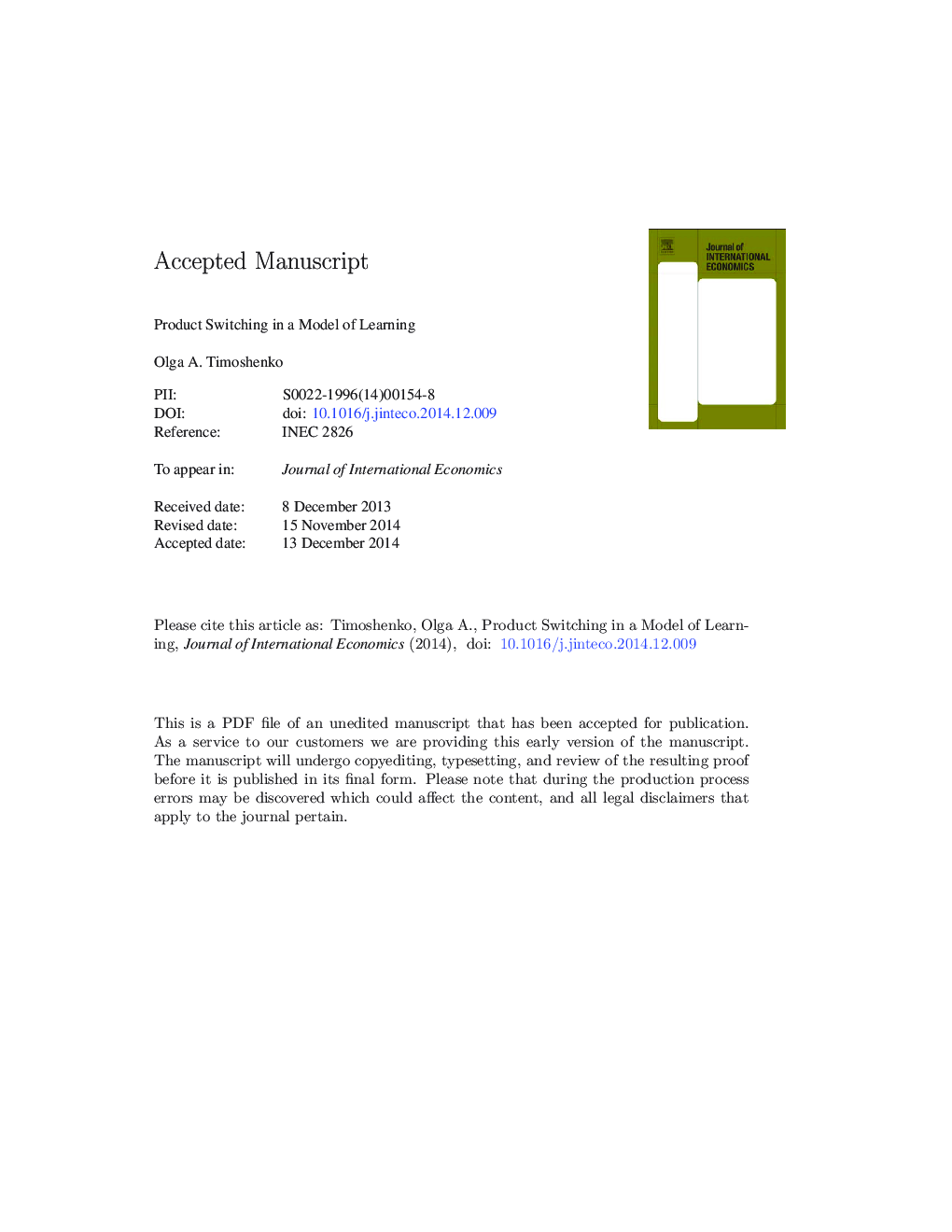| Article ID | Journal | Published Year | Pages | File Type |
|---|---|---|---|---|
| 10477339 | Journal of International Economics | 2015 | 85 Pages |
Abstract
New exporters add and drop products with much greater frequency than old exporters. This paper explains this behavior with a model of demand learning in which an exporter's profitability on the demand side is determined by a time-invariant firm-destination appeal index, and transient firm-destination-year preference shocks. New exporters must learn about their appeal indices in the presence of these shocks, and respond to fluctuations in demand by adding and dropping products more frequently than older exporters because they have less information about their attractiveness to consumers. Calibrated to match cross-sectional and dynamic moments of the distribution of sales and scope, the model quantitatively accounts for two thirds of the extent of product switching. The model further predicts that in response to a decline in trade costs, existing exporters add new products and new exporters enter a destination. Counterfactual implies that the contribution of product adding to export growth resulting from a fall in trade costs is substantially larger than the contribution of exporter entry.
Related Topics
Social Sciences and Humanities
Economics, Econometrics and Finance
Economics and Econometrics
Authors
Olga A. Timoshenko,
